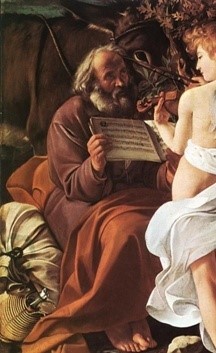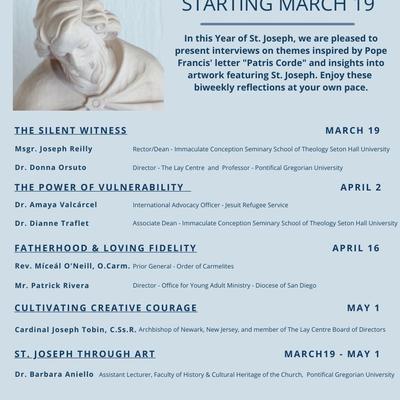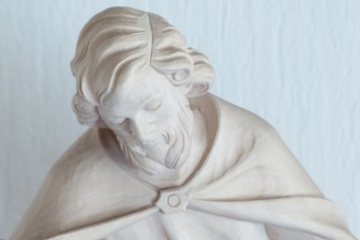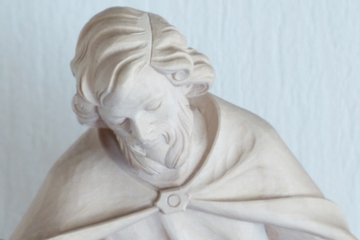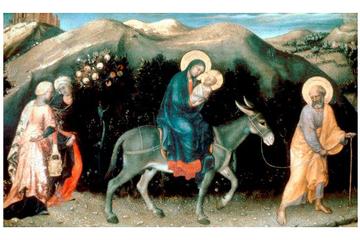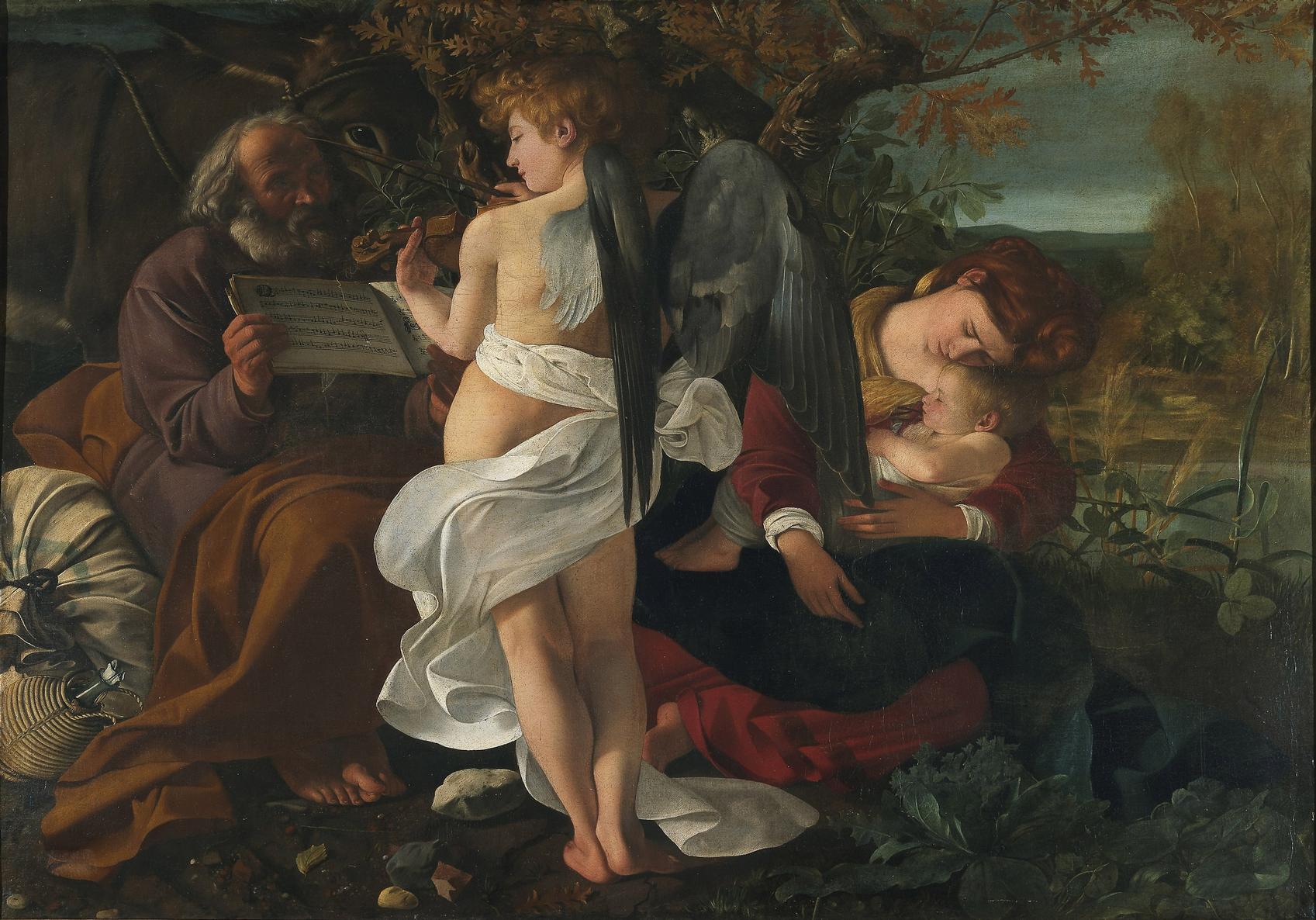
Photo credit: Rome, Doria Pamphilj Gallery © 2021 Amministrazione Doria Pamphilj s.r.l. Courtesy of the Doria Pamphilj Trust.
By Barbara Aniello
ROME - Just like the hinge of a diptych, the angel in Caravaggio’s “The Rest on the Flight into Egypt” divides the painting in two. On one side we see the adult face of Joseph, on the other the Apollonian face of Mary: shadow versus light, age versus youth, aridity versus fertility.
On the left, Joseph, in awe, holds a musical score. He has become a lectern for celestial music, which for him is mysterious and unfathomable. On the right, Mother and Son are intertwined. They represent a double fiat, co-protagonists in the history of salvation. And yet, while Joseph seems very distant from Mary and Jesus, he is indispensable to them.
In the contented pose of the Child, who has just finished suckling, and in the surprise of Joseph, who holds the musical score, is a crucifixion in nuce. Looking at Joseph’s feet: We see that he is not massaging them or rubbing them together. Neither is he crossing them in a childish way, out of innocent naivete. In this, there is specific theological reference. His big toes are crossed over each other and his arms are slightly open, mirroring the pose of the sleeping Child, whose feet are also overlapping. His is a premonitory sleep of his forthcoming road to Calvary, the via dolorosa, of which Mary felt the pain in her heart.
Joseph seated on a sack of wheat and the sealed wine flask on the ground next to him allude to the Eucharist to come, but not yet revealed. Without a full understanding, Joseph leans on God's plans and offers them his full support. Joseph’s obedience is perfect. It goes beyond his own understanding, as represented by his raised eyebrows. He is the man of silence and in silence he carries out God’s plan, even if he does not fully understand it.
While the angel instructs Joseph in the school of divine music, a violin string breaks. The music, which is interrupted, is an allegory of the scene depicted — it is truly a “rest in flight.” It also represents the alter ego of the man who participates in the harmonious “fiat” of Mother and Son through his mystical silence. His fiat is subdued and simple, hidden but radiant, silent but eloquent.
Dr. Barbara Aniello is an art historian, musicologist and cellist. She is currently an associate lecturer at the Pontifical Gregorian University in the Faculty of History and Cultural Heritage of the Church.
Listening: "Quam Pulchra es" Arrangement by Stefano Sabene Mottetto. Composed by Noël Bauldewijn (1480 circa – Antwerp, 1529) based on the notes visible in the musical score in the painting.
